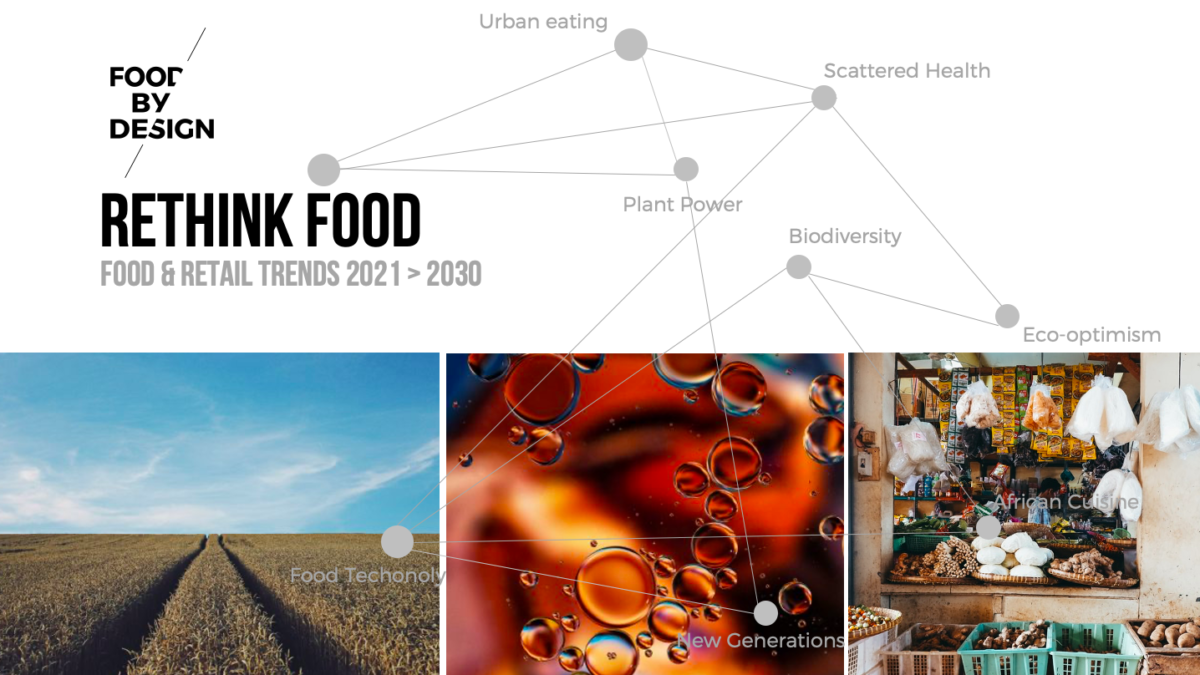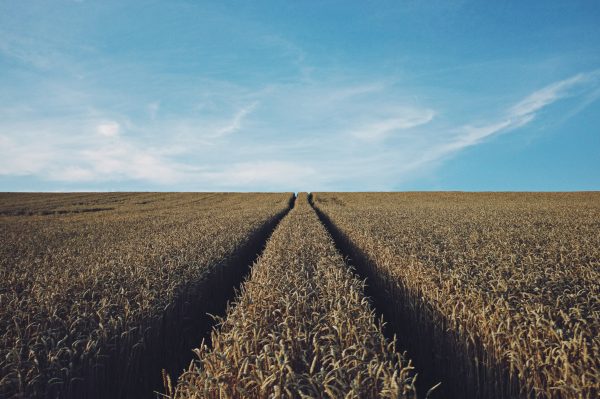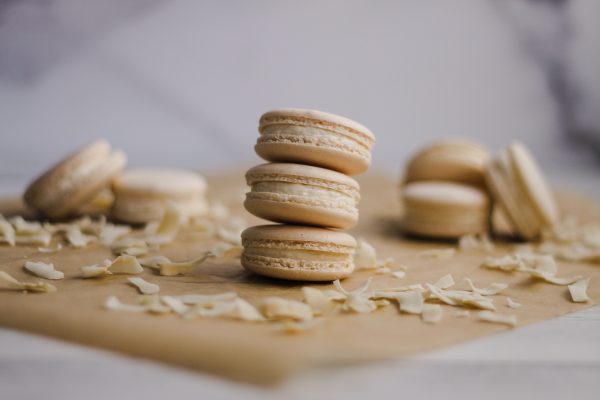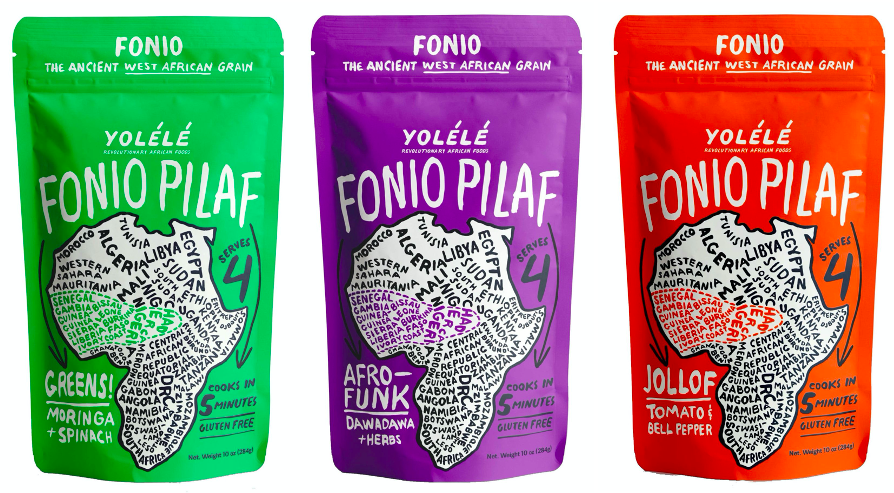
In this blog we share five food trends for 2021. This is a little hint of our on-going food trend work. A foretaste. Curious about the whole story tailored to your category or market, please let us know.
Food trend 1 #The agricultural future on your plate
The production of our food weighs heavily on our planet. And that’s why we see the discussion intensifying on how we can do better in all parts of the world. Certainly, in a small country like the Netherlands, this discussion is more relevant than ever; more critical questions are being asked about how it’s possible that we can be the world’s second largest agricultural exporter with such a small surface of land. On one hand very admirable, on the other hand the awareness is growing that it has a price. The price of an unbalanced ecosystem, such as a loss of biodiversity, soil depletion, (animal) diseases, a disturbed nitrogen balance, etc. As in any existential discussion, emotions are running high, as evidenced by the farmers’ actions last year. But we are reaching a tipping point and the believe is growing that there is no way back to continue thoughtlessly in the old way. The farmers can’t do this on their own; it is time that our government in The Hague lays down a real and clear vision. Agricultural entrepreneurs, investors and policymakers together will need to develop new earning models. Smart farmers are already experimenting with less artificial fertilizers, no/less pesticides, circularity, regenerative farming, pixel cropping, dual-purpose animals, switching from livestock farming to land cultivation, more crop rotation, and so on. Although this discussion is still mainly between farmers, policymakers and environmental organizations, it will increasingly cascade down via the media to consumers. And if the knowledge and awareness of consumers is growing, the opportunity presents itself to develop brands and products that have a new agricultural philosophy at the heart of their brand positioning and product proposition. In doing so, they give consumers the ‘power’ to choose a better agricultural future and thus support innovative farmers. We already see organic retailer Ekoplaza taking the first steps. In their latest ‘Lekker Weten’ magazine they promise that as a customer of Ekoplaza you are already part of the agriculture of the future. More and more, we see brands that go ‘a step further than organic’.

Agriculture visions and philosophies will become a part of future brand and product propositions
Food trend 2 #Milk without cow, palm oil without palm
Some ingredients are notorious for the high pressure they exert on our planet. And that’s why we’re now seeing all kinds of start-ups working on innovative programs to bypass the biggest bottlenecks in our food system. For example, many parties are working hard on making milk without a cow, because that cow creates such a large eco-footprint. This is not about plant-based milk, but about a real equivalent of the white gold. A truly comparable composition in terms of molecular structures and enzymes. From Silicon Valley, to Asia and in our own country, the Netherlands, there is a lot of experimentation on this topic. For example, the founder of the Vegetarian butcher, Jaap Korteweg, has started a new adventure with the brand ‘Those Vegan cowboys’. In which he tries to produce milk from grass and a cow-robot stomach. The cowboys hope to discover how they can make milk with fermentation that allows carbohydrates and components from plants ‘n grasses to be upgraded to dairy-identical proteins via microbial processes. At the same time shortening the food chain by cutting the cow out. But we also see initiatives for ‘chicken without egg’ and ‘palm oil without palm’. Although the last one is plant-based, it takes up a great deal of our planet’s surface because of the enormous areas of mono-plantations and the forest clearing that precedes to that. Bill Gates recently invested in the start-up C16 that uses microbes to convert food waste and industrial by-products into a synthetic palm oil, which matches the properties of real palm oil. This trend heralds a new era. One in which we are going to produce our food in a revolutionary different way than before. When successful and scalable, this will radically change our food system.

We are rethinking fundamentally how our food is produced > e.g. palm oil with palm, created with food waste and biotech
Food trend 3 #Seriously good sweet
It’s time for something less heavy. Eating is first and foremost about enjoyment. And maybe. some of us, do that at its most intense in between meals with sweets! Small bits of something very tasty. However, in recent decades we have seen sweets become big bags of cheap candy. Often flavored and brightly colored with artificial additives. But fortunately, we now see more attention for quality sweet. Patisserie and confectionery are reconquering the stage of real craftsmanship. Patissiers are the new rock stars on instagram. And also in the less-exclusive domain we see ‘better sweet’ like liquorice with gum arabic, ice cream from real fresh cream and milk (instead of powdered milk) a crunchy milk chocolate with a higher cocoa percentage (dark milk), winegums from real fruit juice, cookies from real butter, macaroons from the more expensive almond flour and apple pie made with real fresh apples instead of canned apple filling – A real good basis instead of crazy taste combos, bright colors. We will become less appealed to all those distractions. An ode to the natural and pure variants. It’s going to be more about quality instead of quantity. Back to sweets as they were meant to be. And the true meaning of the Dutch word ‘snoepen’, enjoying something small and very tasty instead of thoughtlessly grabbing and putting in a lot of calories. After all that doesn’t give a nice after-taste. Whoever understands this well is the innovative Spanish pastry chef Jordi Bordas who, makes cakes with fewer calories in a revolutionary way with his B-concept.

Real quality sweets instead of being distracted by crazy taste combo’s and bright colors
Food trend 4 #Digital food
Until 2020, food had been under-represented in e-commerce compared to other markets such as consumer electronics, entertainment and fashion. But because covid-19, we are now seeing an acceleration in digital shopping and delivery of food. During the lockdown we saw online purchases rise sharply. As we become more mobile again, we believe these numbers will fall slightly. But that a part of it will be permanent. Therefore digital strategy and innovation is becoming increasingly important for food companies. Online the rules are different from offline. Generating ‘digital appetite’, and thinking through the food customer journey well, are essential. Of course, in addition, to a sharp positioning how your food is relevant at a specific moment for a specific target group. Read more about this on our earlier blog about digital food innovation. In the coming years we will see al lot of new order and delivery concepts appear such as local food concepts, hyper fresh, specialist propositions, flexible company catering, restaurants with new take-away concepts, home dinners, late night delivery, meal subscriptions, etc. These kind of food offers will require different communication, different menu design and different packaging design than in the offline world.

Penetration of buying food online had increased since Corona lock-downs
Food trend #5 African cuisine
Until now, our dining adventures were mainly focused on the Mediterranean, Arabian, Asian and American cuisines. But now we are slowly but surely seeing the African cuisine on the rise. And that is not a coincidence! Here, a number of underlying developments coincide nicely.
Africa is a huge continent with a great diversity in cuisines, dishes, flavors, ingredients and cooking methods. The food is known as basic and pure, in combination with many different vegetables. Well-filled soups, fine stews and grain recipes such as Jollof, a super easy one-pan grain dish. Moreover, African dishes are often gluten-free and contain a lot of plant-based protein, which fits well with other food trends.
The hunger for the origin of our food has increased tremendously in recent years and a quest has started for provenance. Authentic African ingredients such as cassava and okra are getting more attention in the West, but also grains, like fonio, are in the spotlight. It’s super healthy and easier to grow in a changing and dry-ing climate. More and more chefs, like the Senegalese Pierre Thiam pay a homage to their continent and its ingredients. In addition to being a chef, he calls himself a social activist whose mission is to bring West African cuisine to the ‘fine dining scene’. Next to that, he runs the fast-casual restaurant chain Teranga in New York, where he mainly has African ingredients on the menu. With the brand Yolélé foods he wants to introduce fonio on the American home market. In the coming years we will encounter the influences of African cuisines more often. So get ready for the African Food safari!

African dishes will become more popular, like the Fonio range by Yolélé
Curious about the whole story and all the food trends for 2021? Or do you have innovation plans? … feel free to contact Marleen or Marielle to see how more insight in food trends can help you to be one step ahead of the market. They are also happy to tell you all about their innovation method FoodbyDesign in order to innovate in an inspiring way.